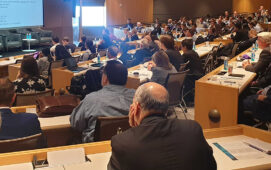
Goldman Sachs has thrown its weight behind the Fintech Open Source Foundation (FINOS) with a major open source contribution of a logical modelling language, internally named PURE, and a platform and visual modelling tool that generates PURE-based models, known within Goldman as Alloy. The contribution is designed to encourage banks to further adopt open source, open standards and collaborative software development practices, and help them work with fintechs and regulators to find common ground.
Neema Raphael, co-chief data officer at Goldman Sachs, says: “Open source technology is setting us on a path to greater collaboration and building mutual understanding. PURE and Alloy have become critical tools within our firm across the trade lifecycle. They help us price, assess and evaluate risk, clear transactions, and perform regulatory reporting. We’ve only scratched the surface though. We’ll unlock tremendous value for the industry when we codevelop and share models.”
Goldman Sachs’ contribution has been well received by FINOS and its membership that includes the likes of Citi, Morgan Stanley and Deutsche Banks. Gabriele Columbro, executive director at FINOS, says: “The open sourcing of Alloy and PURE, will have far-reaching impact on the banking industry. Using Alloy, industry participants will be able to collaboratively build shared data models in a common language.”
Russell Green, head of group architecture at Deutsche Bank, and a FINOS board member, adds: “The collaborative power of open source software is huge and as an active FINOS member I’m looking forward to evaluating the capabilities of Alloy and PURE. Modelling can be fragmented and inconsistent, especially across asset classes. Alloy and PURE offer the potential to build common data models and, along with other FINOS initiatives and open source technologies such as Plexus, could help to address many of the industry’s interoperability and interchange use cases.”
Commonly developed models using PURE are expected to reduce system integration costs in bilateral and multilateral trading scenarios for both sell-side and buy-side firms. The models are also expected to lower the compliance burden and complexity for both banks and regulatory agencies. Columbro comments: “Open source ‘compliance-as-code’ has the potential to change fundamentally how banks and regulators work together.”
Alloy and PURE will be open sourced in three iterative phases. In the first phase, which has already begun, a new external version of Alloy is being deployed using GitLab for modelling source control. In the second phase, to begin in January 2020, other banks and financial services organisations will be invited to use the new instance of Alloy to pilot collaborative financial model development in PURE.
Following the pilot, the underlying Alloy and PURE code will be made publicly available in a FINOS GitLab repository under an Apache 2.0 open source licence. This final phase is expected to be completed in mid-2020.
Subscribe to our newsletter




